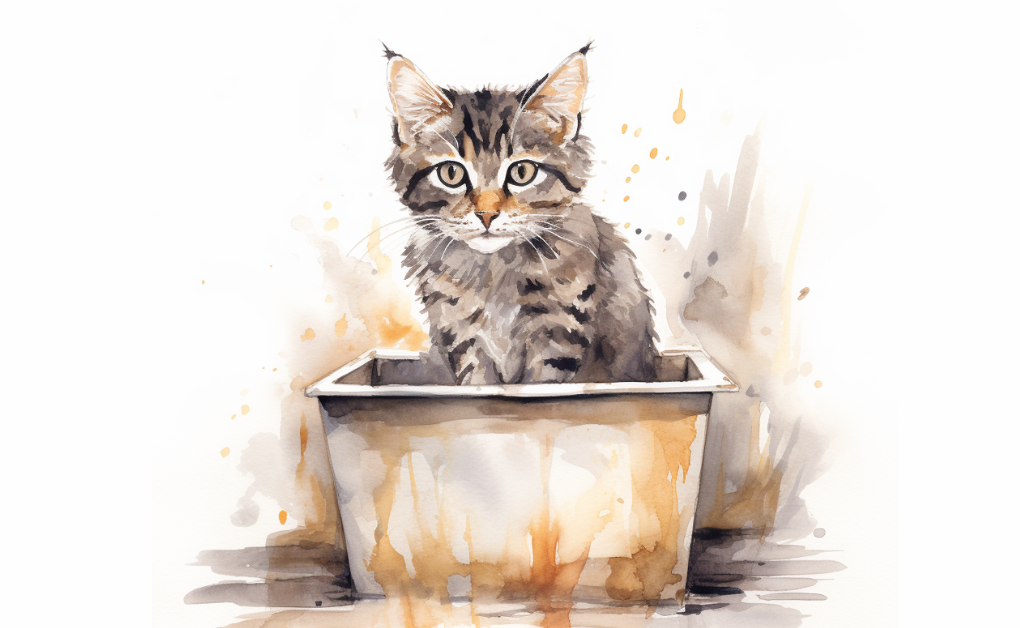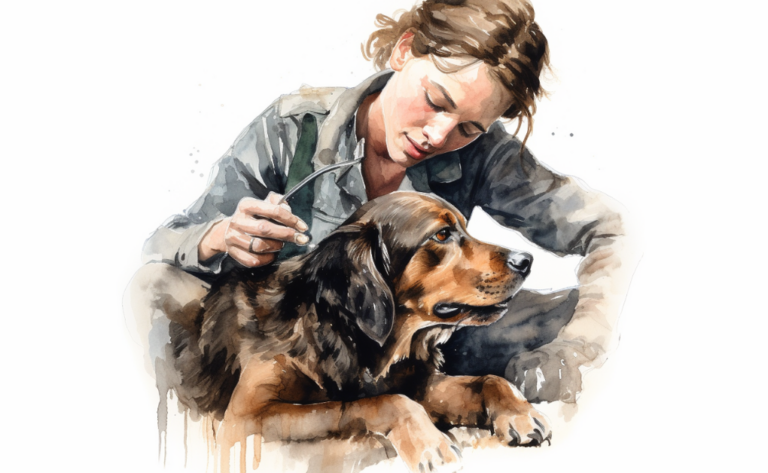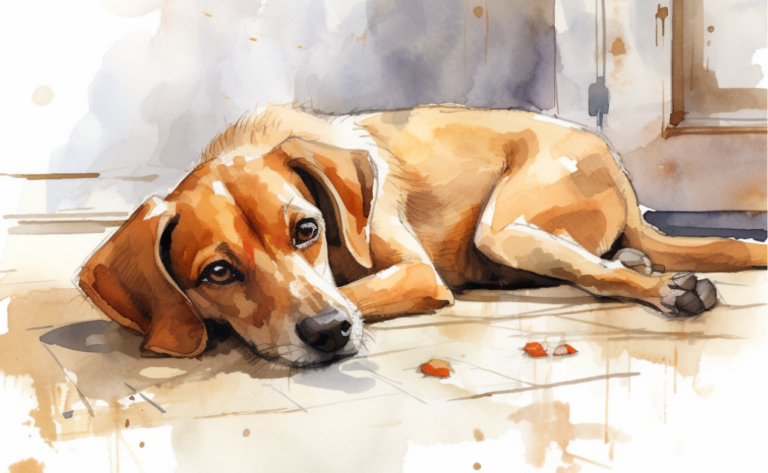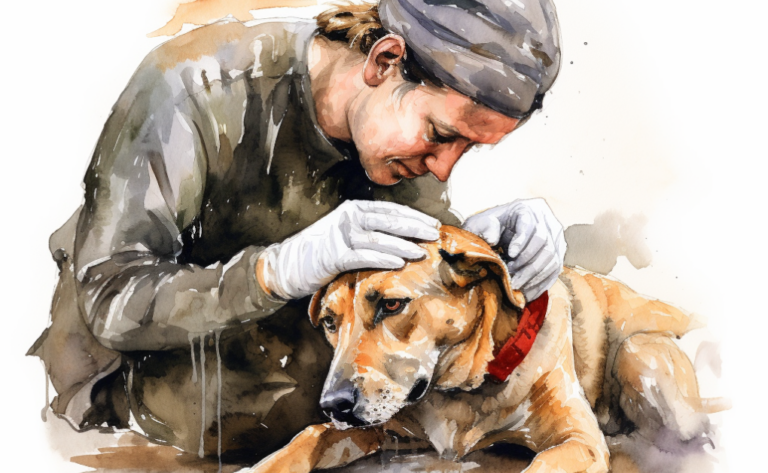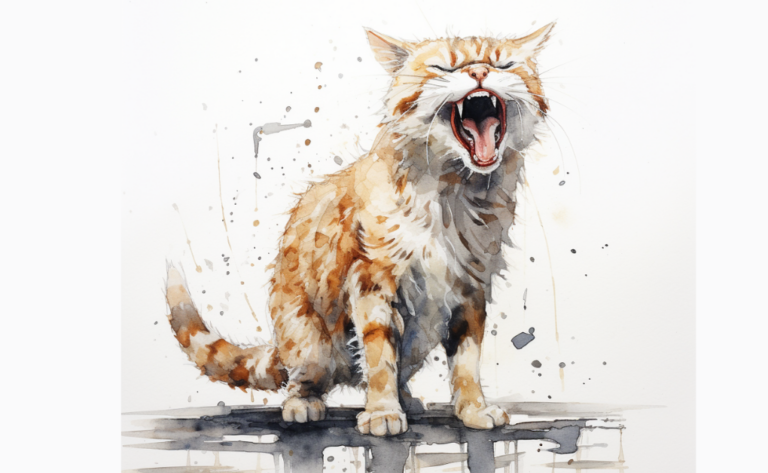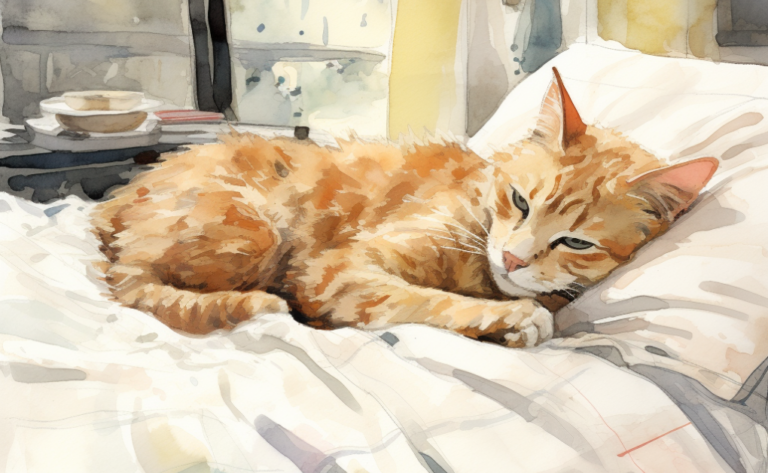What is Urethral Obstruction in Cats?
What is it?
How is it Treated?
Breed Predispositions
Male cats, particularly those that are overweight, are at a higher risk of developing urethral obstruction. However, there is no specific breed predisposition for this condition.
Introduction
During her morning routine, Emily noticed her usually energetic tabby cat, Oliver, acting lethargic and struggling to use the litter box. Worried about his sudden change in behavior, she wasted no time in seeking the help of her trusted veterinarian.
Urethral obstruction in cats is where the urethra, the duct responsible for carrying urine from the bladder out of the body, gets obstructed or blocked. This blockage hinders the standard urine flow, leading to potentially severe consequences. Various factors within the urinary system contribute to the incidence of urethral blockage in cats. Cat owners must understand the mechanisms behind these urinary problems, as it’s vital for promptly recognizing such a situation. Recognizing the symptoms of a blockage quickly can allow for timely veterinary care to alleviate the blockage and prevent bladder inflammation.
What Causes Feline Urethral Blockage?
Urethral blockage in cats, or feline lower urinary tract obstruction (FLUTD), can result from several reasons. Let’s delve into some common causes of urinary blockage:
- Urinary Stones: These are crystals or stones within the urinary tract, including the urethra, bladder, or kidneys. These stones can obstruct normal urine flow, leading to urinary obstruction.
- Urethral Plugs: This is a mixture of mucus, crystals, and inflammatory cells capable of causing a blockage in the urethra. These plugs are more common in male cats and are often related to inflammation in the lower urinary tract.
- Strictures or Urethra Narrowing: Abnormal narrowing of the urethra, or scar tissue, can impede urine flow, leading to blockage.
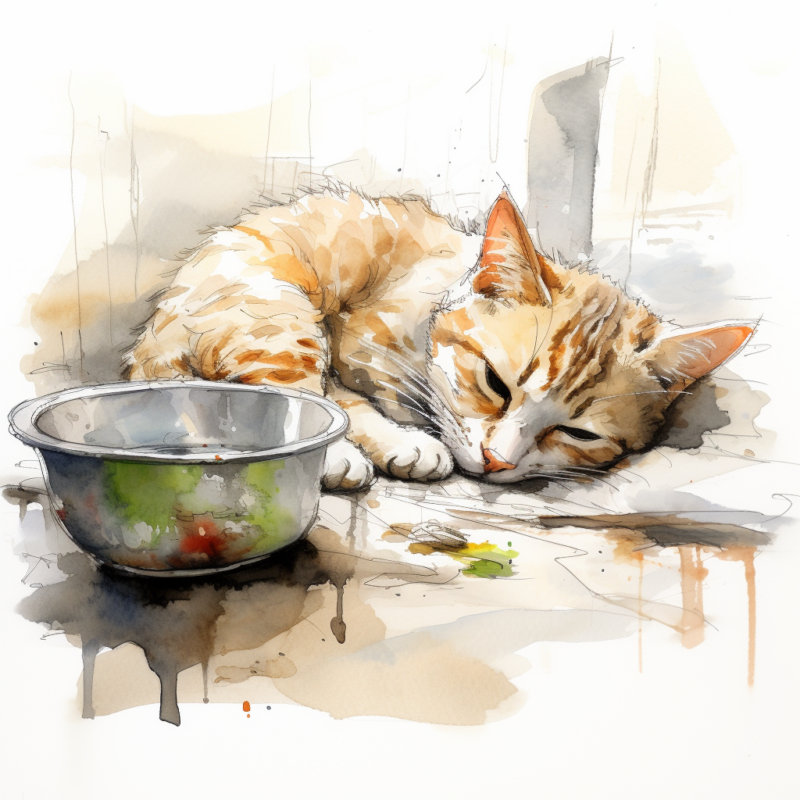
- Inflammation or Infection: Inflammation of the urinary tract, such as feline idiopathic cystitis (FIC), can lead to swelling and irritation that may result in a blockage. Furthermore, urinary tract infections caused by bacteria can contribute to a urethral blockage.
- Tumors or Growths: Though rare, tumors or growths within the urinary tract can physically obstruct the urethra.
Certain factors may increase a cat’s risk of developing a urethral blockage, such as a stressful environment, a concentrated or dry diet, obesity, insufficient exercise, and specific health conditions like diabetes. The urethral blockage is a severe, potentially life-threatening condition often seen in male cats, especially neutered male cats because their urethra is narrower than female cats. Indoor and overweight cats may also experience more urinary issues, including blockage. Immediate veterinary intervention is required to alleviate the blockage, address the causes of urinary blockage, and prevent further complications, like a bladder stone or urinary tract infection.
What are the Signs of Urethral Obstruction?
Urethral blockage in cats can present with several distinct symptoms. If you observe any of the following signs in your cat, it’s important to seek veterinary care immediately:
- Difficulty or straining to urinate
- Painful urination
- Frequent licking of the genital area
- Changes in behavior, such as restlessness, aggression, or lethargy
- Loss of appetite
- Vomiting or nausea
- Abdominal pain or discomfort
- Presence of blood in urine
- Collapse or loss of consciousness in severe cases
Diagnosis of Urethral Obstruction in Cats
When a cat exhibits signs that may point to urethral blockage, immediate medical attention is necessary to prevent potentially fatal complications. To accurately diagnose feline urinary obstruction, veterinarians employ several evaluation methods:
Physical Examination
The veterinarian initiates the process by conducting an all-encompassing physical assessment. They keenly observe the cat’s behavior and physical state, looking for indicators of discomfort or agitation. The vet will also perform abdominal palpation to evaluate the size and feel of the bladder, which can sometimes be noticeably swollen or hard.
Palpation
The vet will assess the bladder’s size, form, and positioning during the abdominal palpation by gently probing the cat’s belly. This hands-on method can also help pinpoint potential pain or discomfort in the urinary tract.
Urinalysis
An analysis of a urine sample is crucial in diagnosing urethral blockage. The vet checks the urine for blood, crystals, bacteria, or other signs of inflammation or infection. Also, examining urine pH level, specific gravity, and the concentration of various substances offers valuable insights into potential root causes of the blockage, such as urinary tract inflammation or stones.
Blood Tests
Blood samples may be taken to get a comprehensive view of the cat’s overall health, including kidney function. Increased concentrations of substances like blood urea nitrogen (BUN) and creatinine could reduce kidney function due to the blockage. Blood tests also offer valuable information about the cat’s hydration status and electrolyte balance, including crucial potassium levels.
Imaging
X-rays or ultrasounds might be used to visualize the urinary tract better and pinpoint any obstructions or abnormalities. X-rays can provide crucial information about the size and location of urinary stones, while ultrasounds give a more detailed view of the bladder and urethra. These imaging methods aid the vet in determining the exact location and severity of the blockage, which is essential in understanding feline lower urinary tract disease.
Depending on the unique situation, further diagnostic steps may sometimes be warranted. These may encompass procedures like cystoscopy, which involves inserting a thin tube fitted with a camera into the bladder to examine the urethra and bladder directly. Alternatively, contrast radiography might be used, where a contrast dye is injected into the urinary tract to enhance the visibility of any blockages, providing essential insight into the cat’s urine flow.
Prompt diagnosis and action are vital when dealing with a urethral blockage in cats. If you suspect a life-threatening urinary blockage in your feline friend, seeking veterinary care immediately is critical to avert complications and facilitate the most effective treatment.
Treatment for Urinary Blockage in Cats
Urethral Catheterization
Typically, the primary course of treatment for a urethral blockage involves urethral catheterization. With sedation or anesthesia, a pliable tube is introduced into the urethra to circumvent the obstruction, enabling urine flow. This action not only diminishes the pressure on the bladder but also assists in washing out accumulated toxins or debris. For continuous drainage and observation, the catheter may be left in position.
Fluid Therapy
Cats afflicted by urethral blockage often exhibit dehydration and varying electrolyte concentrations. Thus, fluid therapy is essential to restore the balance of hydration and electrolytes. Intravenous fluids are employed to provide the necessary hydration and support kidney function while also helping cleanse toxins.
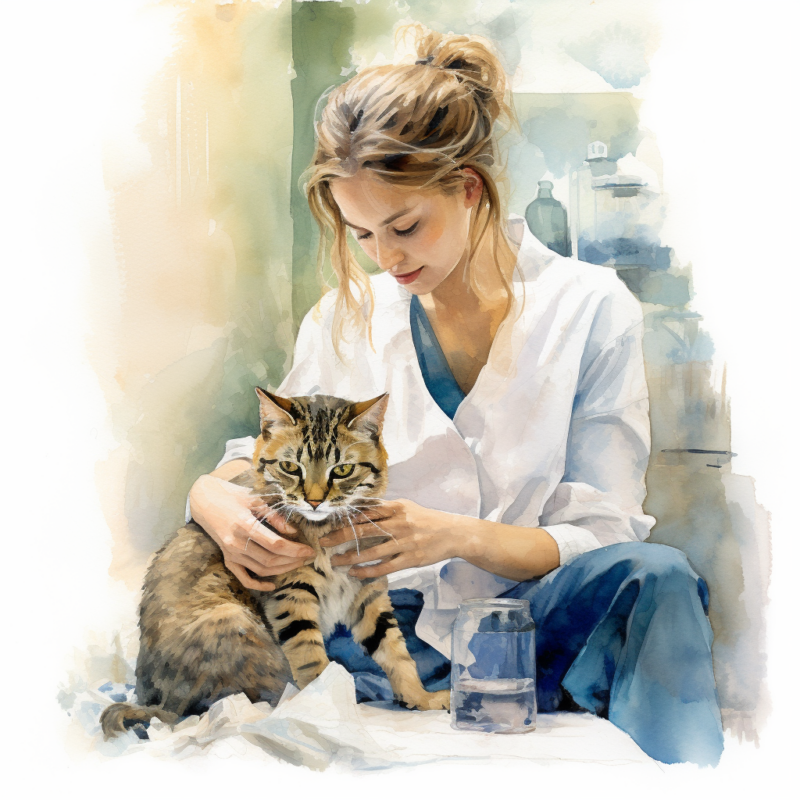
Pain Management
It’s crucial to note that urethral blockage can cause significant discomfort and pain for affected cats. Therefore, pain management, a critical part of the treatment, might involve using pain-relieving medications such as opioids or non-steroidal anti-inflammatory drugs (NSAIDs). These drugs can help to ease the pain, decrease inflammation, and improve the cat’s comfort.
Bladder Expression
In some cases, manual bladder expression might be necessary to aid in urination. This process, involving gentle pressure applied to the lower abdomen, aids the cat in emptying its bladder. It might be implemented initially if urethral catheterization is unsuccessful or as a subsequent measure to ensure total bladder evacuation.
Surgery
Surgery might be needed in certain circumstances to eradicate the root cause of the blockage. Such surgical interventions could include the removal of bladder stones or correcting anatomical irregularities contributing to the blockage. Surgical recourse is typically preserved when other failed treatments or recurrent blockages are observed.
Emergency Treatment
Urethral blockage is deemed an emergency medical condition as it can be life-threatening. Immediate intervention is critical to alleviate the obstruction and restore normal urine flow at the urethral opening. Once the obstruction is relieved, further management steps may be required to avoid future instances. These might involve dietary modifications, enhancing water consumption, or using urinary acidifiers, as the vet recommends.
Importantly, it is imperative to get in touch with a veterinarian if your cat exhibits signs of a urethral blockage. They can devise an appropriate treatment plan, considering the blockage’s severity and the cat’s overall health. This might also involve addressing secondary issues, such as a bladder infection that can arise in cats treated for urethral blockage.
Prevention of Urinary Blockage in Cats
Pet owners can adopt several preventive strategies to mitigate the risk of urethral blockage in cats:
- Promote Sufficient Hydration: To maintain a healthy urinary flow and prevent the formation of obstructive crystals or stones, it’s crucial to ensure your cat stays hydrated. Achieve this by making fresh water available in clean bowls around your living space. Some cats are drawn to running water, so that a water fountain could be a beneficial investment.
- Keep Track of Urination and Litter Box Habits: Pay attention to your cat’s urination patterns and litter box usage. Monitor the regularity, volume, and appearance of their urine. If you observe any changes in their urination habits, such as straining, frequent urination attempts, or blood in the urine, seek veterinary attention promptly.
- Offer a Balanced Diet: Serve your cat a balanced diet tailored to support urinary health. Consult your vet to determine the most appropriate diet for your cat’s needs. Some diets are specially designed to prevent urinary issues by managing mineral content and maintaining a proper pH balance, known as a urinary diet.
- Reconsider Exclusive Dry Food Diets: Exclusive dry cat food diets may not provide enough moisture, leading to concentrated urine. To boost water consumption and promote adequate hydration, consider introducing wet or moistened food into your cat’s meal plan, especially for cats that eat dry food.
- Manage Stress Levels: Elevated stress can exacerbate urinary issues in cats. Create a tranquil, enriched environment for your cat, with ample hiding places, vertical spaces, and opportunities for play and mental stimulation. Gradually introduce any changes to minimize potential stressors.
- Schedule Regular Vet Check-ups: Regular wellness visits with your vet can help monitor your cat’s overall health, including urinary health. Routine checks, urine analysis, and blood tests can detect early signs of urinary problems, allowing for prompt intervention and preventing situations where the urethra is blocked.
- Maintain a Clean Litter Box: Ensure the litter box is clean and easily accessible. Daily scooping and frequent complete litter replacements are advisable. Some cats may refuse to urinate in dirty litter boxes, leading to bladder wall thickening and increasing the risk of small urinary obstructions.
- Seek Timely Veterinary Care: If you observe any signs of urinary distress or changes in urination behavior, don’t delay seeking veterinary care. Swift intervention can help prevent the escalation of urinary issues and the formation of blockages, which can be life-threatening.
Remember, prevention is paramount when it comes to cats with urethral blockage. Implementing these preventive strategies and being vigilant about your cat’s urinary health can help decrease the risk and enhance its overall well-being. Cats can develop severe complications from a urinary collection if an obstruction can cause a backup. Prevention is the best approach.
Frequently Asked Questions
Disclaimer: The information provided on this veterinary website is intended for general educational purposes only and should not be considered as a substitute for professional veterinary advice, diagnosis, or treatment. Always consult a licensed veterinarian for any concerns or questions regarding the health and well-being of your pet. This website does not claim to cover every possible situation or provide exhaustive knowledge on the subjects presented. The owners and contributors of this website are not responsible for any harm or loss that may result from the use or misuse of the information provided herein.

